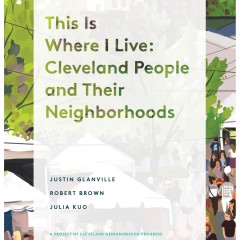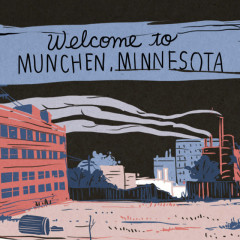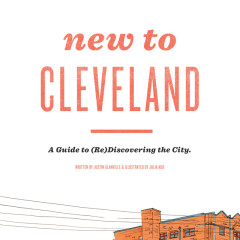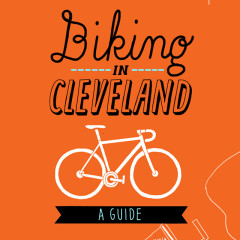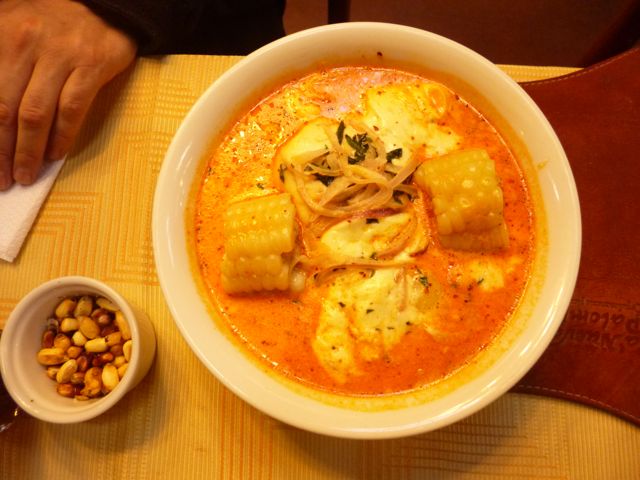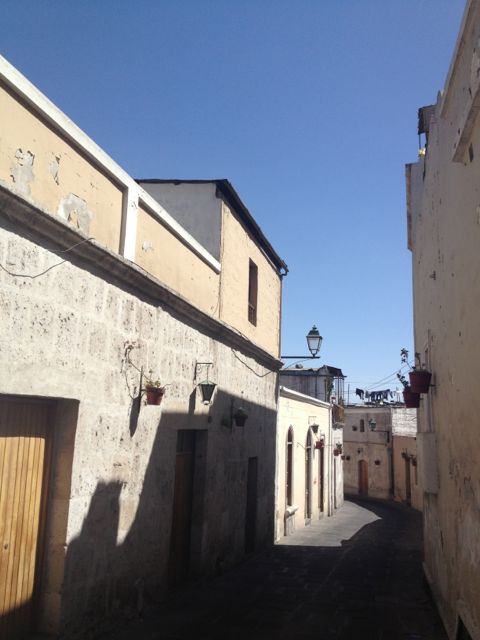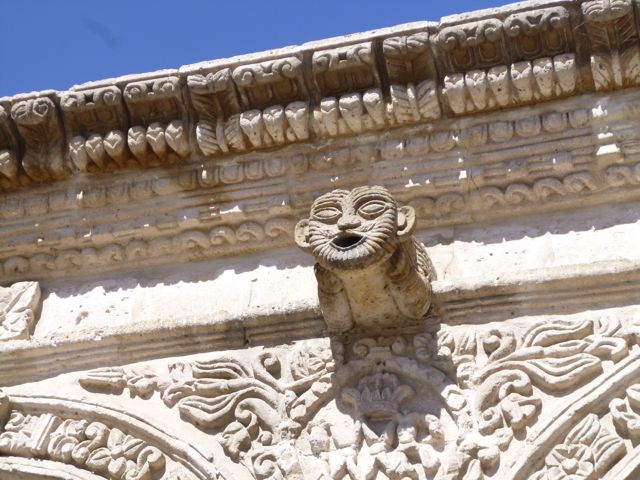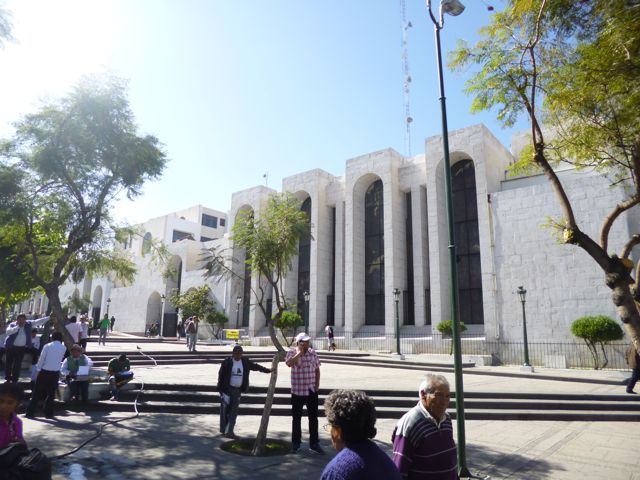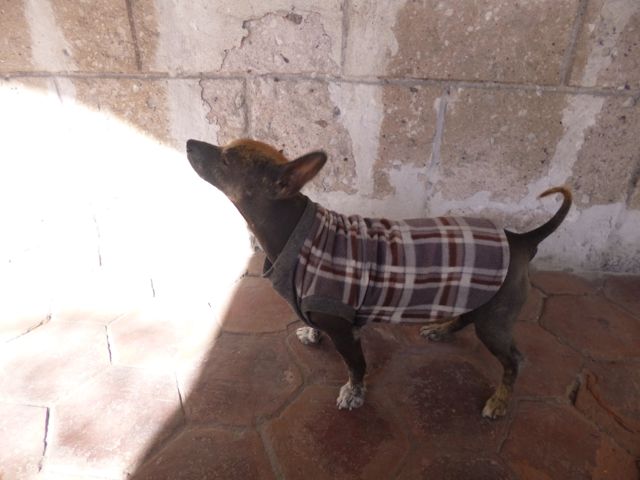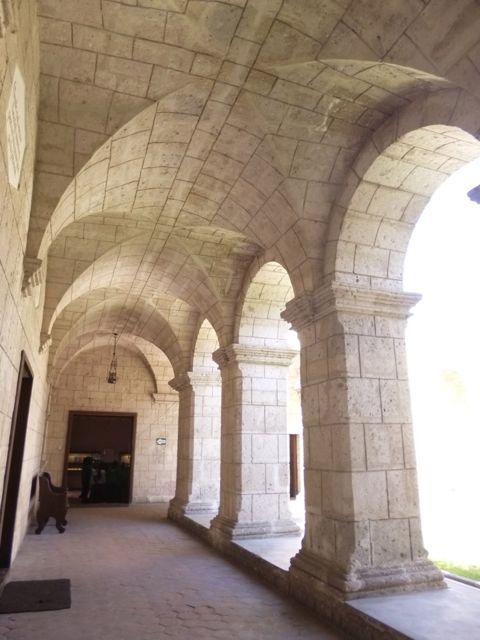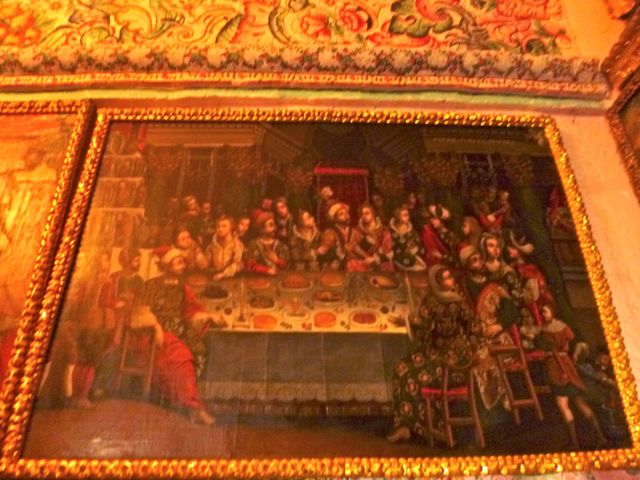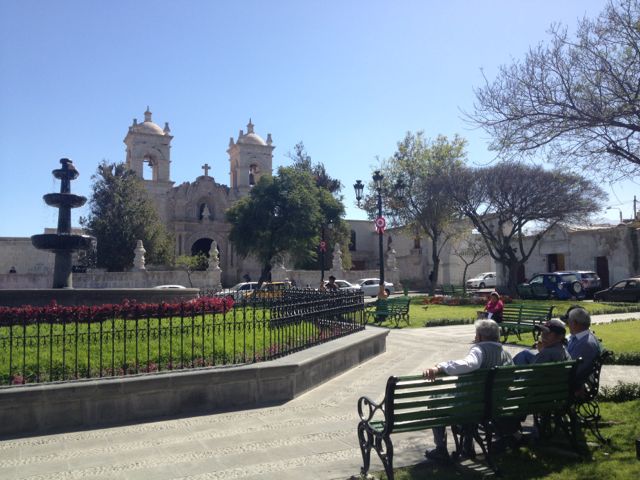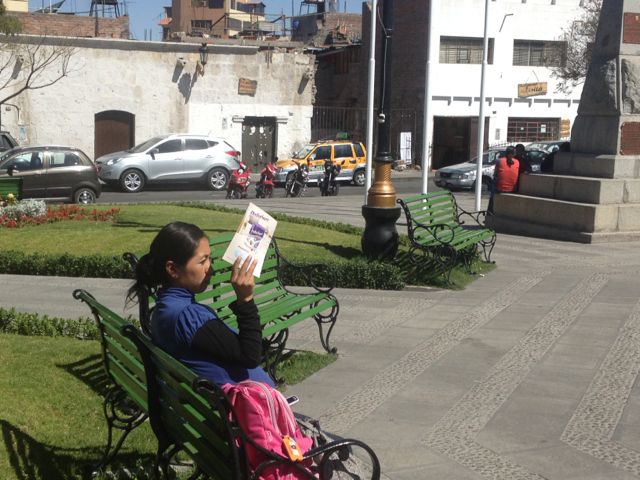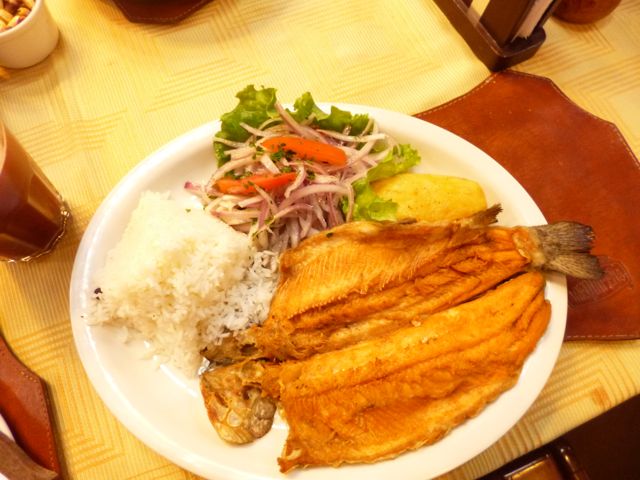When you see streets and public plazas that look like these, under fully sunny skies at 70 degrees with no humidity, and you know that the nighttime temperature is going to drop to a cozy 48 degrees, and that you’ll be eating some deliciously rich and cheap meal in between now and then…
Well, it’s hard not to think: Gee, it might be nice to live here someday. Or at least come back really soon.
Calle Cristales:
La Campania:
That plaza there has pretty great-looking gargoyle downspouts, too:
Sillar has got to be one of the most beautiful building materials I’ve ever encountered. It’s like walking around in a city-sized Greek ruin, the same ghostly, tactile cream color — only people still live here. Here’s a modern building in sillar:
And then there are little things like Misti, the mascot dog of the cloistered nuns of Santa Teresa. An especially welcome sight when you’re badly missing your own doggie (Love you, Vinny Two-Snoops!):
Yes, that’s right: I went to another cloistered monastery today. I can’t get enough of them, apparently. This one, Santa Teresa, is much more off the beaten path than Santa Catalina. Exactly 21 cloistered nuns live there, and no one else can join them until one of the 21 dies. And that lucky new nun will pay dearly for the privilege, just like the nuns used to do back in the day at Santa Catalina.
But what she gets in return is entree to a really fascinating tradition, at this particular monastery, of artisanship. For centuries, nuns who live here have been painting and crafting up a storm, creating elaborate (OK, fussy) works like these:
I guess they have plenty of time, not being able to interact with anyone from the outside world.
Once again, I was strongly advised to hire a guide… and she was awesome. And not only because she asked me if I wanted the tour in French (The Belgian strikes again!). She was professional and thorough and very, very respectful of what we were seeing.
I really must miss Vinny, though, because I kept taking pictures of Misti (named after the local volcano), and found myself more interested in him than in the art. I scratched him behind the ears for a few minutes, and then he decided he wanted to bark and howl at the empty cloister.
Oh, speaking of volcanoes and seismic activity… There was an earthquake here last night. Yeah! I was in bed, about to fall asleep, when suddenly it felt like a large car plowed into the hostal. It lasted all of two seconds, with nothing afterward, and I continued on to dreaming. When I asked a few locals about it today, they were blasé. The equivalent of: “Yep, that happens a few times a month.” Still, I’m glad I got to experience an Arequipena earthquake. A kind initiation.
I journaled for a while afterward in the Plaza de Armas, and during my midday run, I went up into the attractive, semi-suburban neighborhood of Cayma. There, even in a quasi-suburb, I found another stunning plaza made all of sillar:
Even though it doesn’t get very hot here, the sun is quite forceful. In fact, it’s one of the places on earth that experiences the highest degree of solar radiation (thanks, Dan, for this info!). Even Arequipenas shield themselves from the rays sometimes:
I was excited for my Spanish lesson today, because part of it would include eating at a local restaurant with Alfredo, one of my teachers. Finally, the mysteries of the local cuisine would be unlocked!
Alas, the place he took me to was rather touristy. Not German/English-speaking touristy, but Peruvian touristy. I knew because all the waiters and waitresses were wearing big floppy hats. I guess authentic picanterias (restaurants that serve traditional Peruvian lunches) are a dying breed, but I’m determined to find one. Maybe in Puno.
Still, the food was quite good. Here are some gratuitous meal shots:
Chi-cha, made of fermented corn. According to Alfredo, it has an alcohol content of about 2 or 3 percent. Still, enough to make me feel a little buzzy.
And then an appetizer, escribano, potatoes with oil and vinegar, many many onions (the countryside here produces a lot of onions — I guess that would be one downside of living here), tomatoes, and rocotos — hot peppers. Very hot. I ate a slice and started to cry.
For main dishes, I got the trucha frita. Trucha is a river fish, similar to trout, that’s native to these parts. It reminded me of a milder form of salmon.
But Alfredo got the most delicious thing: Cauche de queso, which basically means cheese stew. How can you go wrong? You can’t. I had a few bites and will probably be full for the rest of the week. It was amazing. Cheese, potatoes, tomatoes (and yes, onions), in a creamy, anise-seasoned base:
Another typical dish, chuppe de camarones (shrimp stew) is similar to this one and is on my to-try list. Maybe in Puno.
At night, I went to see a concert of Vivaldi music at Santa Catalina that turned out to be performed by some really untalented kids. Two adults got up at one point and played guitar and violin, and that part was great. Still, being inside the monastery walls with the Southern Cross appearing in the sky, and a trimmed thumbnail of a moon, was pretty magical.
I’m looking forward to joining up with my friend Seth tomorrow in Puno. Traveling solo has been great — especially on Easter Island, where I was so stupefied by everything that I don’t know if I could have held actual conversations with anyone else. But I’m ready now to get back to interacting regularly with someone who knows me, and whom I know in return. Someone with whom I can compare experiences. Basically, to have someone to ask: Did you see that? Did that really happen?



